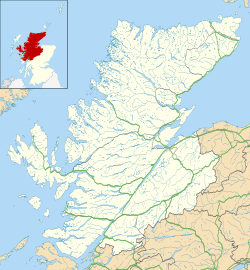This article needs additional citations for verification .(August 2017) |
Torridon
| |
|---|---|
 Torridon village | |
Location within the Highland council area | |
| OS grid reference | NG8956 |
| Council area | |
| Lieutenancy area | |
| Country | Scotland |
| Sovereign state | United Kingdom |
| Post town | Achnasheen |
| Postcode district | IV22 |
| Dialling code | 01445 |
| Police | Scotland |
| Fire | Scottish |
| Ambulance | Scottish |
| UK Parliament | |
| Scottish Parliament | |
Torridon (Scottish Gaelic : Toirbheartan) is a small village in the Northwest Highlands of Scotland. The name is also applied to the area surrounding the village, particularly the Torridon Hills, mountains to the north of Glen Torridon. The village lies on the shore of Loch Torridon.




